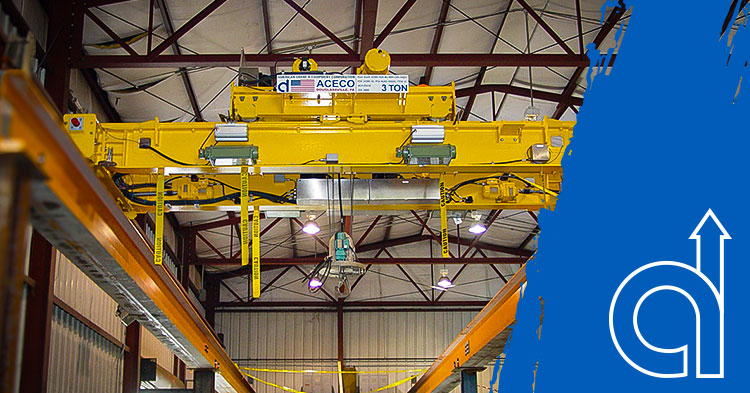Overhead cranes are the workhorses of industrial facilities—lifting, shifting, and keeping production lines humming. But even the most powerful piece of equipment can grind to a halt if it’s not maintained properly. And when maintenance slips, so does safety, productivity, and your bottom line.
Let’s take a look at five of the most common crane maintenance mistakes and, more importantly, how to avoid them.
1. Skipping Routine Inspections
It’s easy to push off inspections when everything seems to be running smoothly. But that’s exactly when problems like worn hooks, fraying wire ropes, or faulty brakes can quietly develop.
Avoid it: Stick to a regular inspection schedule—daily visual checks, weekly operational tests, and periodic in-depth inspections. Spotting issues early keeps things moving and prevents costly downtime.
2. Not Lubricating Properly
Lubrication is one of those basic tasks that’s easy to get wrong. Whether it’s using the wrong type of grease, over-lubricating, or simply forgetting to do it, poor lubrication can cause serious wear and tear.
Avoid it: Follow the manufacturer’s guidelines closely. Know what needs lube, how much, and how often. And keep track—having a maintenance log helps your team stay on point.
3. Overlooking the Electrical System
Most maintenance plans focus heavily on mechanical components, which makes sense—but that often leaves electrical systems out of the spotlight. Until something fails.
Avoid it: Include electrical components like limit switches, wiring, and control panels in your regular maintenance checks. Look for corrosion, loose connections, or signs of overheating, and make sure your safety systems are working as designed.
4. Not Following the Manufacturer’s Guidelines
Every crane is different. Treating them all the same or relying on past habits can lead to problems. Each model comes with its own service requirements for a reason.
Avoid it: Always use the manufacturer’s maintenance schedule and service recommendations. That includes part specs, torque settings, and inspection intervals. It’s not just about performance—it’s also about staying aligned with the equipment’s requirements.
5. Letting Untrained Staff Handle Maintenance
Crane maintenance is not a DIY job for whoever’s available. Untrained staff can miss warning signs or make mistakes that put people and equipment at risk.
Avoid it: Make sure only qualified personnel perform maintenance and inspections. If your team needs a refresher, training is a worthwhile investment. And for complex systems, partnering with experienced crane technicians is a smart move.
Smart Maintenance Equals Smooth Operations
Good crane maintenance isn’t glamorous, but it is one of the smartest ways to protect your people, your equipment, and your productivity. Avoiding these common mistakes can save you from unexpected downtime—and a whole lot of headaches.
Looking for help with inspections, repairs, or preventive maintenance? American Crane and Equipment Corp. offers expert service and support to keep your equipment in top shape, from OEM parts to full lifecycle maintenance plans.
Have questions? Reach out—we’re here to help keep your cranes lifting with confidence.


